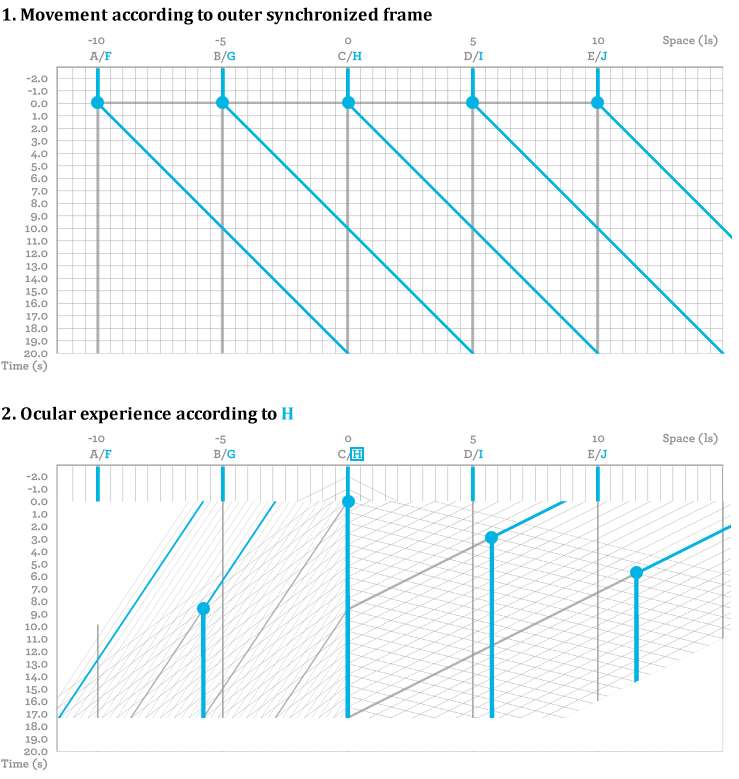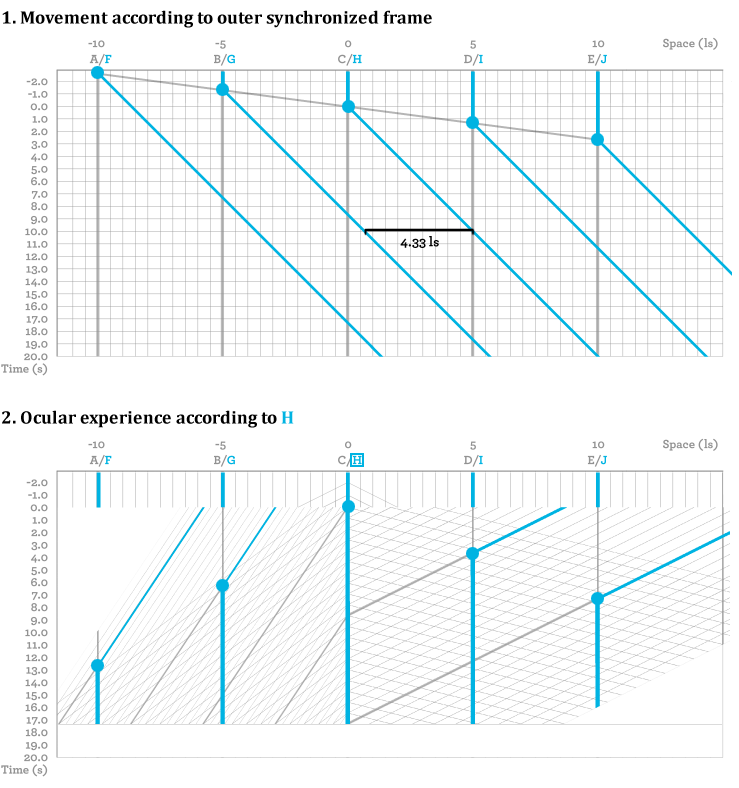3.3 Length contraction
Objects that are moving with a high relative speed will appear to each other to be length contracted. In this section, we will explore this effect using simulation charts.
3.3.1 Identification

-
In chart 1, there are five objects arranged with a separation of five light-seconds. At t=0, they begin to move at a speed of 0.5c.
-
Chart 2 shows the ocular experience of object H. The IGS is applied at t=0.
The end result demonstrates that a synchronized acceleration such as this will cause the objects to become geometrically farther apart in their new frame of reference. This geometrical expansion is consistent with the stretch factor in the derivation of the IGS (γ) and will appear identical to all accelerated objects. The conclusion is that objects that are lined up ahead and behind must begin moving slightly later or earlier to yield the same distances in their new frame of reference.

- In chart 1, we can see how the objects now begin to move in such a way that objects behind start earlier and objects ahead start later, meaning they will appear closer to each other according to the outer synchronized frame of reference. The objects are length contracted by a factor of 1/γ, which, in this case, produces a distance of 4.33 light-seconds.
- Chart 2 shows the ocular experience of object H. It can be observed that the objects now retain their distances in their new frame of reference.